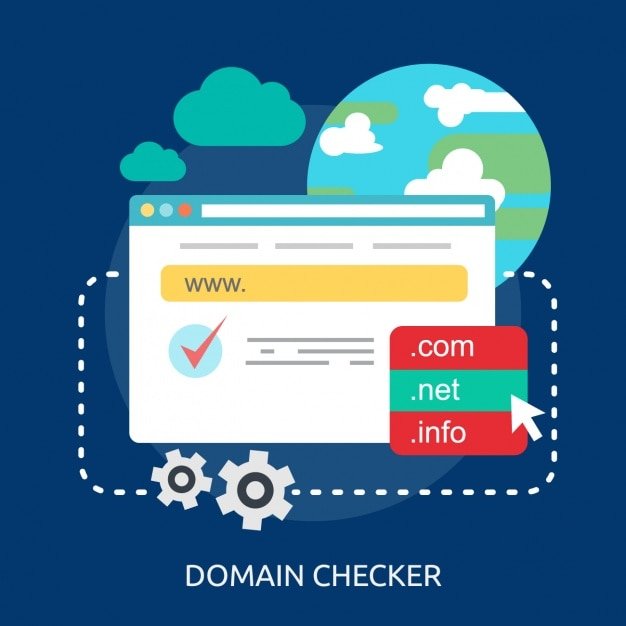How to Set Up and Customize Social Media Accounts on Your Device: Troubleshooting Common Issues
Encountering errors when sending or receiving emails and browser redirection issues caused by add-ons can be a source of major frustration. Whether you’re working from a mobile device, computer, or using a browser-based email client, resolving these issues quickly is crucial for maintaining productivity and seamless communication. In this article, we’ll explore common causes of email send/receive errors and browser redirection issues, as well as how to fix them effectively.

Email Send/Receive Errors: Common Causes and Solutions
When trying to send or receive emails, encountering an error can be frustrating, especially if the issue prevents you from staying connected. There are a variety of reasons why emails may not send or receive, ranging from incorrect settings to server problems.
Common Causes of Email Send/Receive Errors
- Incorrect Email Settings
One of the most common causes of email issues is incorrect configuration of the incoming (IMAP or POP) or outgoing (SMTP) mail server settings. Each email provider has specific server settings that need to be configured correctly on your device for proper communication. - Server Issues or Outages
Sometimes, the issue isn’t on your end. Email service providers like Gmail, Yahoo, or Outlook can experience temporary outages or server disruptions. This may cause problems with sending or receiving messages until the service is restored. - Weak or Unstable Internet Connection
A weak or unreliable internet connection can also cause interruptions in email communication. Emails may fail to send or take longer than usual to receive due to network issues. - Authentication Problems
If your email credentials (username and password) are incorrect or if the email provider’s authentication process fails, you may not be able to send or receive messages. Authentication errors typically show up as a login issue when trying to access your inbox. - Antivirus or Firewall Blocking Emails
Some antivirus programs or firewalls may block email connections due to security settings. These security features might mistakenly flag email communications as a potential threat, leading to issues in sending or receiving messages. - Full Mailbox
If your mailbox is full or nearly full, it can prevent you from receiving new emails. Many email services have storage limits, and once your inbox reaches its maximum capacity, you may encounter errors when trying to receive additional messages.

How to Resolve Email Send/Receive Errors
- Verify Email Settings
Double-check the email configuration settings for both incoming (IMAP/POP) and outgoing (SMTP) mail servers. Ensure that the port numbers, security protocols (SSL/TLS), and server addresses match those provided by your email provider. - Check for Server Outages
Visit your email provider’s website or check their social media channels for any service disruption announcements. Sometimes, maintenance or technical issues can lead to temporary outages that affect email functionality. - Test Internet Connectivity
Make sure your device is connected to a stable and reliable internet connection. If your Wi-Fi or data signal is weak, try switching to a stronger network or resetting your router. - Update Your Credentials
If you have changed your password or username recently, make sure these updates are reflected in the email app or client you are using. Update your login credentials to ensure successful authentication. - Temporarily Disable Antivirus or Firewall
Disable your antivirus software or firewall temporarily to check if it is causing the issue. If the problem resolves, add your email provider’s servers to the whitelist or create exceptions to allow the communication. - Free Up Space in Your Mailbox
Delete old emails or move them to an archive folder to free up space in your inbox. If you’re using a web-based service like Gmail or Outlook, check the storage usage on your account and remove any unnecessary attachments or messages.

Browser Redirection Due to Add-ons: Understanding and Fixing the Issue
In addition to email errors, another common problem users face while browsing is unwanted browser redirection due to browser add-ons or extensions. These redirects often lead to unwanted websites or error messages that disrupt the browsing experience. This problem typically occurs due to certain extensions or add-ons installed in the browser.
Common Causes of Browser Redirection Due to Add-ons
- Malicious or Unwanted Extensions
Some extensions, especially those from untrusted sources, may redirect your browser to unwanted websites. These extensions can be designed to display intrusive ads or cause redirects to certain websites, often without the user’s consent. - Outdated or Incompatible Extensions
Extensions that are outdated or incompatible with your browser version can cause issues, including browser redirection. Even legitimate extensions may malfunction or conflict with other extensions, leading to unexpected redirects or error messages. - Adware or Malware Infection
Adware and other types of malware can cause browser redirects by injecting unwanted code into your browser. This software often redirects users to advertising sites or malicious websites, affecting both browsing and email usage. - Browser Settings or Cache Corruption
Sometimes, browser settings or corrupted cache files can trigger redirects or error messages. If your browser has cached faulty data or settings, it may lead to errors in the way pages load or cause unwanted redirects.

How to Resolve Browser Redirection Issues
- Disable or Remove Suspicious Extensions
The first step is to check your browser’s extensions or add-ons and disable or remove any that are suspicious or unnecessary. Extensions from unknown or untrusted sources are often the root cause of browser redirection issues.- In Google Chrome, navigate to
chrome://extensions/to manage extensions. - In Firefox, go to the
Add-onsmenu and review the installed extensions. - For Microsoft Edge, head to
edge://extensions/to see your installed extensions.
- In Google Chrome, navigate to
- Update Extensions and Browser
Ensure all your extensions are up to date. Many browser issues, including redirection problems, are fixed in extension updates. Additionally, keep your browser itself updated to the latest version to ensure compatibility with extensions. - Run an Antivirus or Anti-Malware Scan
If the issue persists, it’s wise to run a full antivirus or anti-malware scan on your device. Many redirects are caused by malware or adware, which can be detected and removed by reputable security software. - Clear Cache and Cookies
Clearing your browser’s cache and cookies can fix issues caused by corrupted data. Go to your browser’s settings to clear the cache and cookies, which can help remove any incorrect settings that may be triggering redirects. - Reset Browser Settings
If you are still experiencing redirects, consider resetting your browser settings to their default configuration. This will remove any changes made to your browser by extensions or other sources.- In Chrome, go to
Settings>Advanced>Reset settings. - In Firefox, open
Options>General>Restore Defaults. - In Edge, navigate to
Settings>Reset settings.
- In Chrome, go to
- Check for Browser Hijackers
Browser hijackers are a type of malware that modify browser settings to redirect you to unwanted sites. These often hide as extensions or within downloaded programs. Be sure to carefully check and remove any suspicious files or software.
Conclusion
Both email send/receive errors and browser redirection issues due to add-ons can disrupt your online experience. However, with the right troubleshooting steps, these issues can be resolved efficiently. For email errors, start by verifying your settings, checking for server outages, and ensuring your credentials are correct. If you encounter browser redirection due to add-ons, disable any suspicious extensions, update your browser, and run an antivirus scan to remove malware. By following these steps, you can regain smooth access to your email and browsing experience without interruptions.












